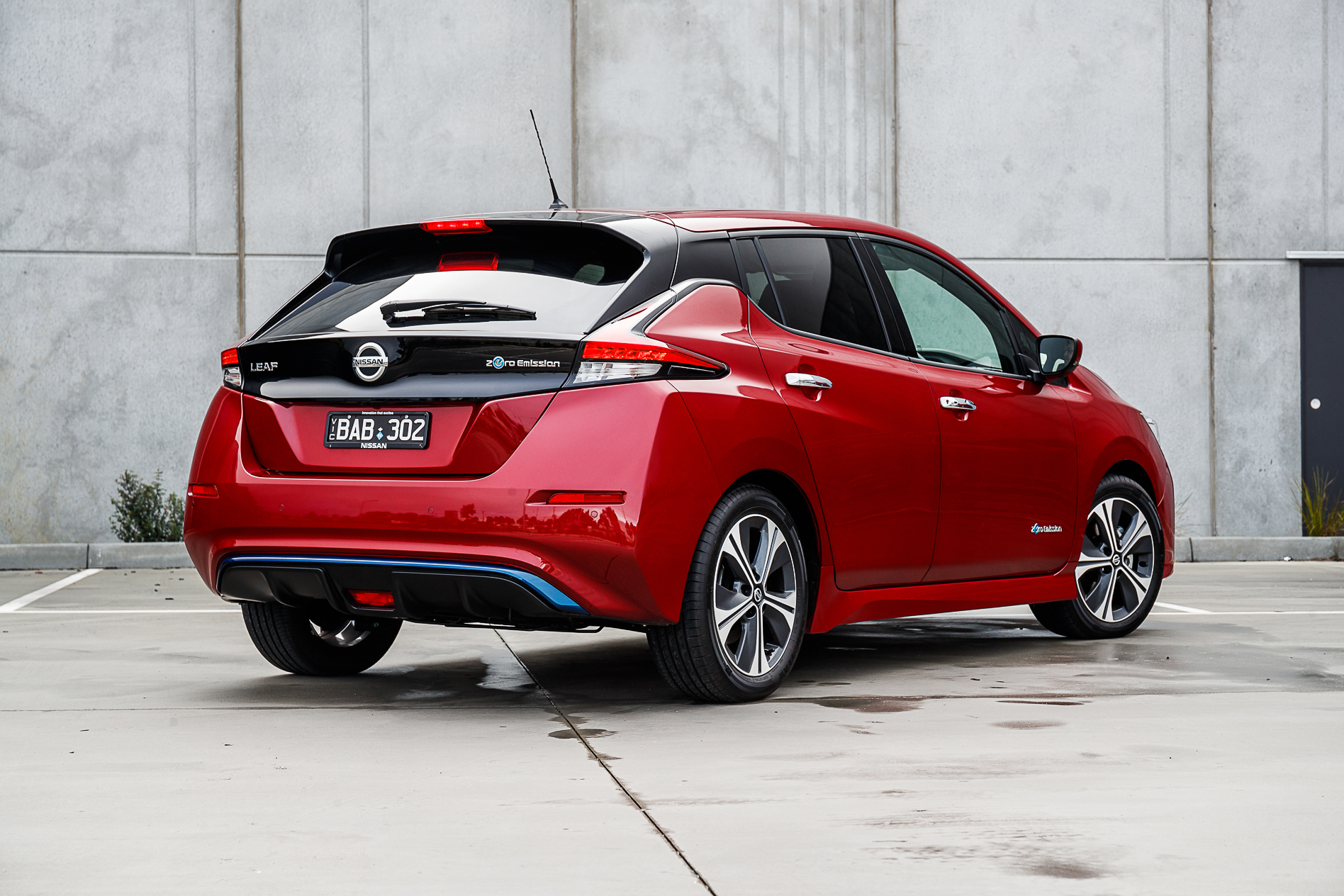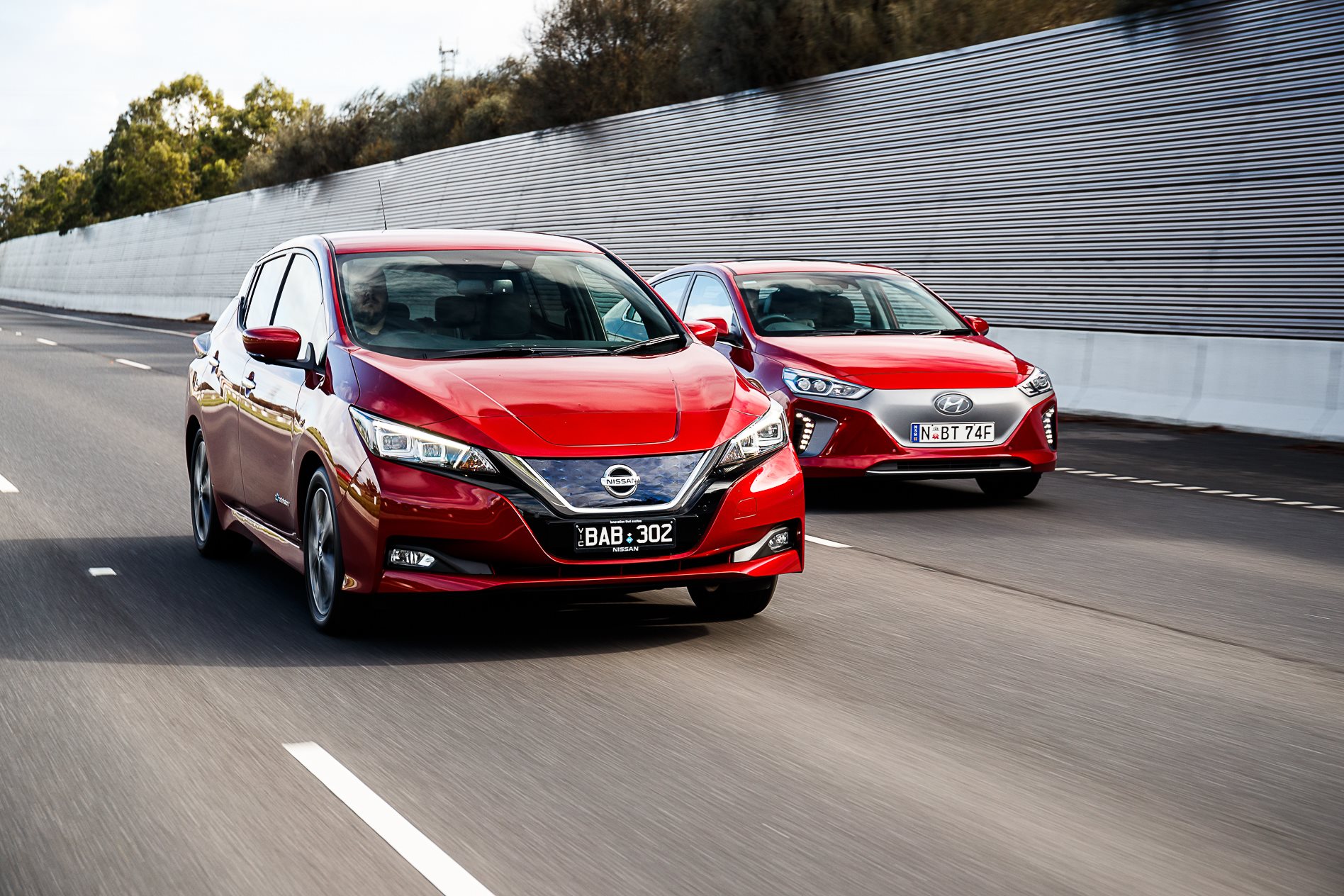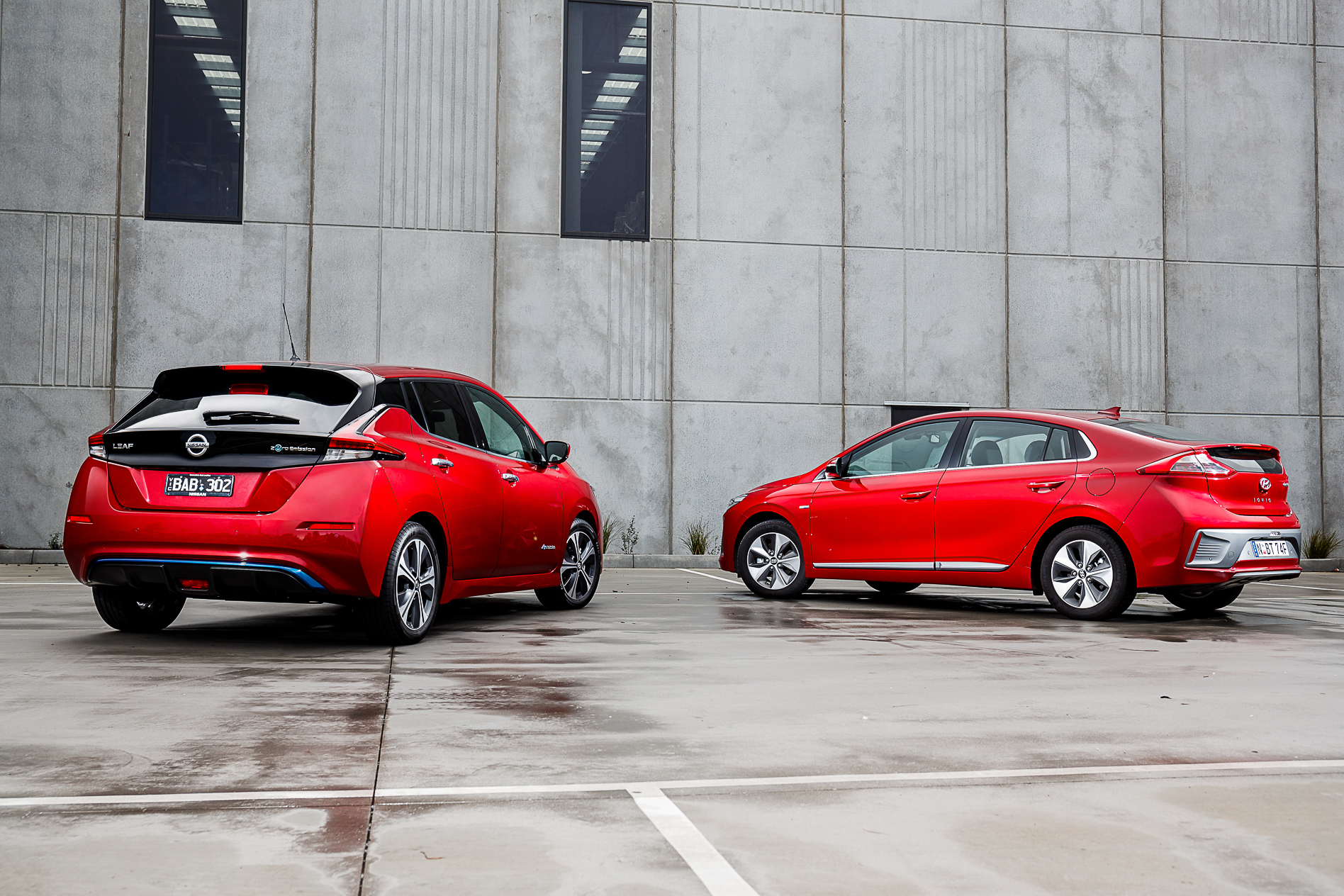
Equipment and value
Fifty grand is a lot for a hatchback regardless of the electric gubbins. The fact that there’s no stripped-out, entry-level version is a shame for those who just want the electric powertrain. Your $49,990 buys goodies like AEB, adaptive cruise control, blindspot monitoring, high-beam assist, reversing camera, heated leather seats (front and rear), heated steering wheel and a Bose sound system. The Leaf is covered by Nissan’s five-year, unlimited-kilometre warranty.
Score: 15/25
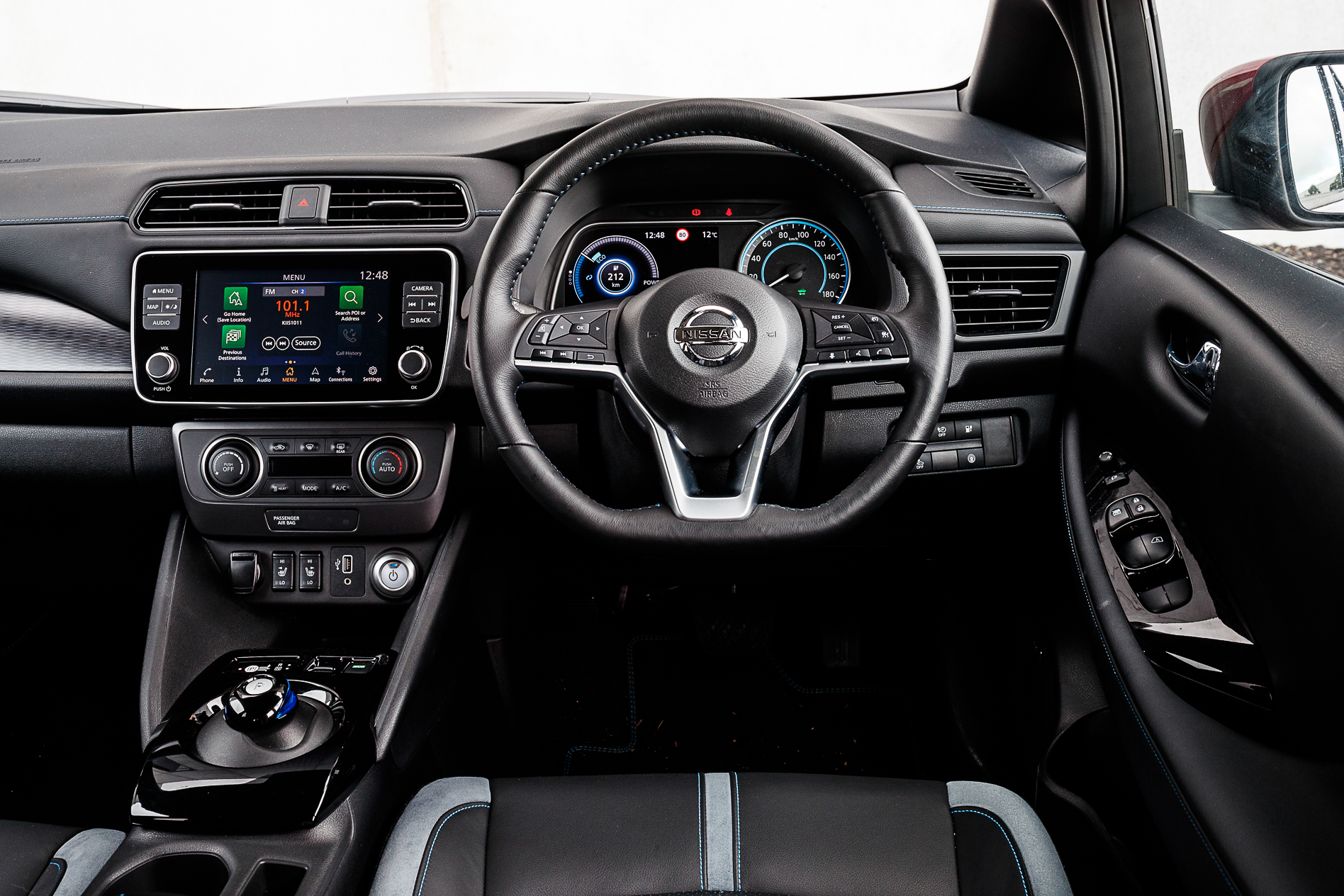
Space and comfort
Cabin space has grown over the first-gen, revealing a spacious interior and 405 litres of cargo capacity. The new infotainment system (8.0-inch touchscreen) is a step forward for Nissan, though the futuristic ‘gear’ leaver is odd. Head and legroom is adequate front and rear. Gripes are a foot-operated park brake, a lack of steering wheel reach adjustment, a high driver’s seat andan elevated rear floor and uneven load bay due to the batteries and sound system.
Score: 18/25
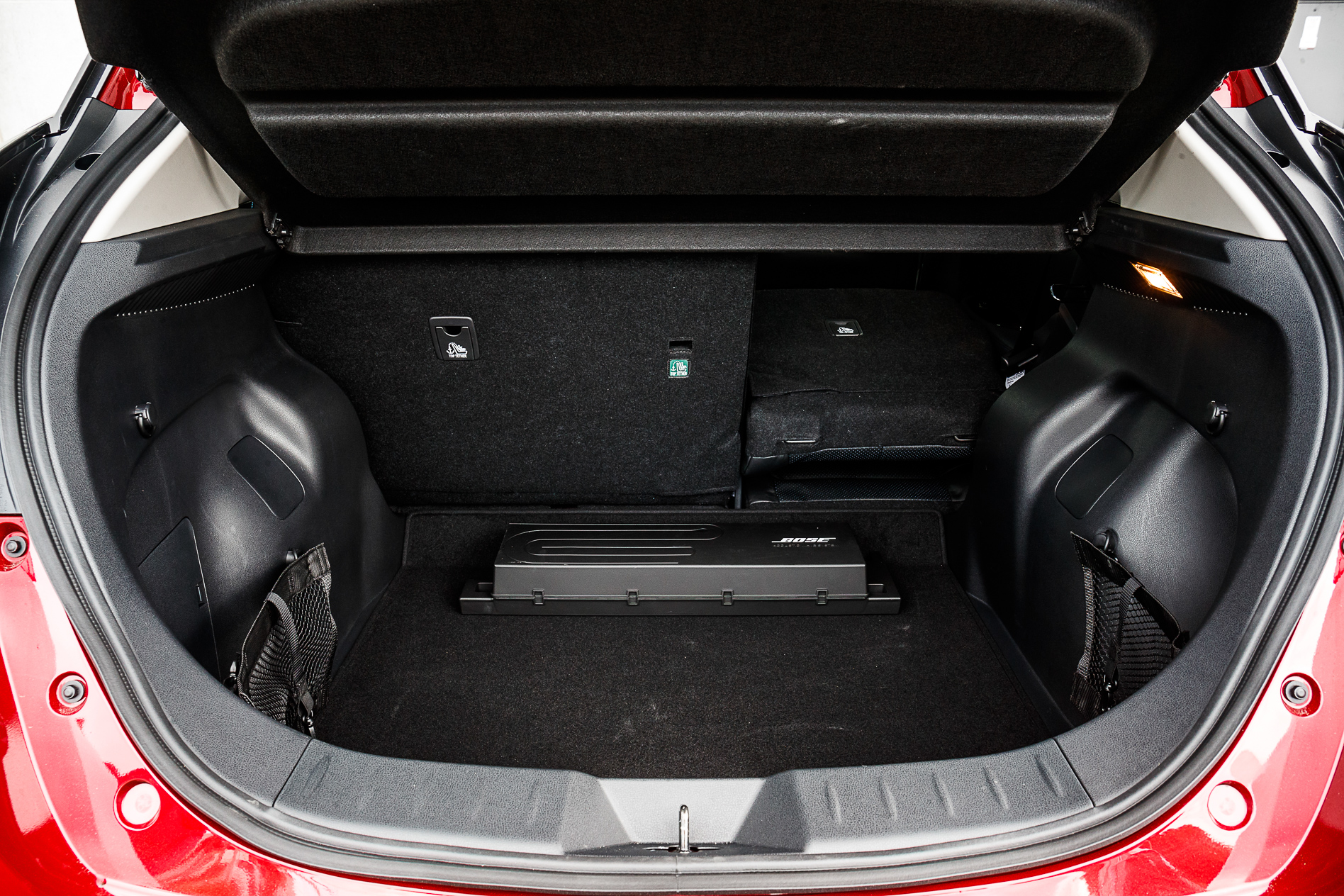
Ride and handling
The taut Leaf isn’t ham-fisted. It’s fun to duck in and out of traffic – just don’t expect an electric hot hatch at 1594kg. A downside to the Newtons is torque steer and traction issues. The e-Pedal regenerative braking is strong and takes some acclimatising, but the Leaf, on its 17-inch alloys, drives relatively ‘normal’. Ride quality errs on the firm side, the damping could use attention and there’s steering rack rattle, but NVH levels are impressively quelled.
Score: 16/25
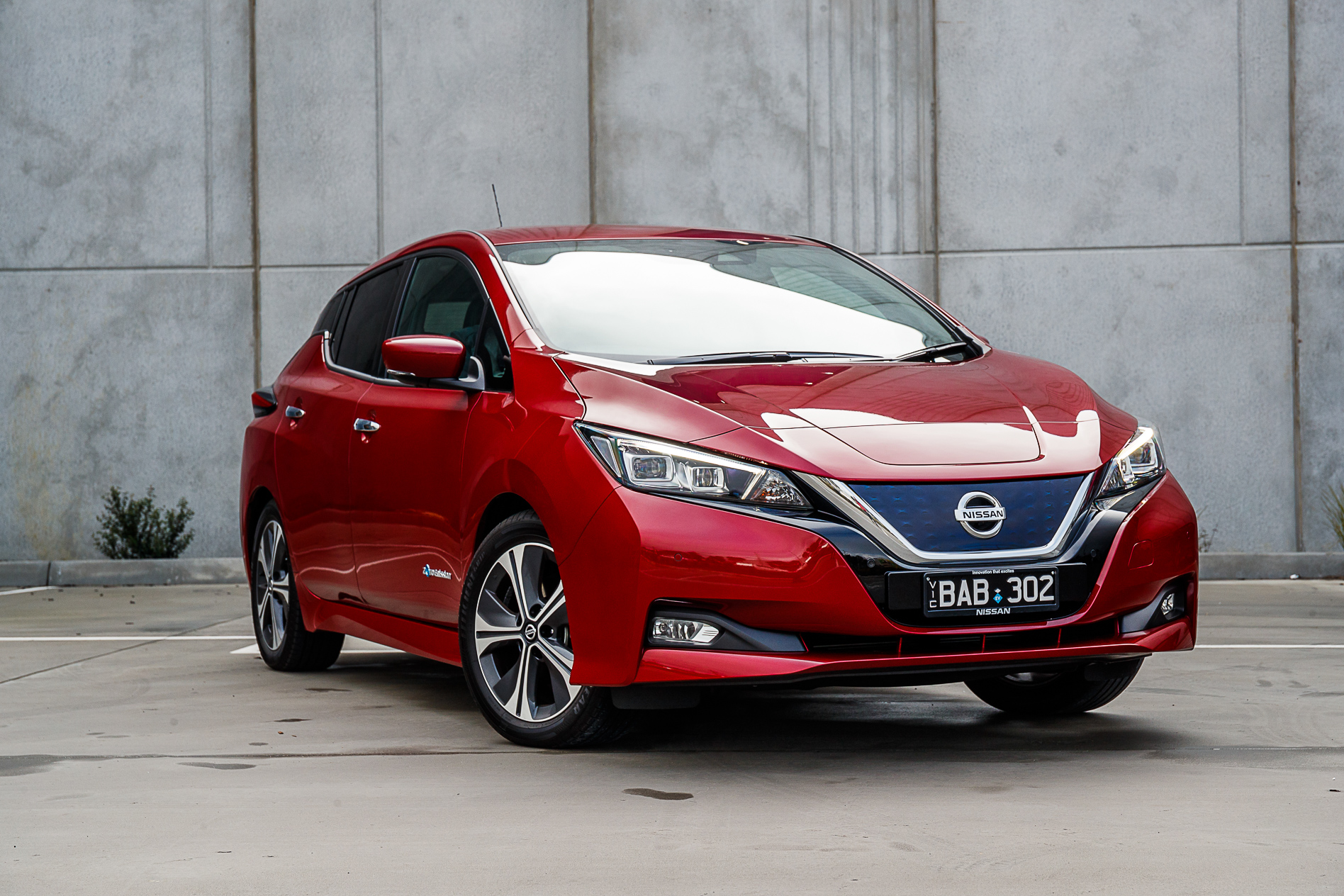
Performance and economy
With 320Nm coming on from 0rpm, the Leaf feels far perkier than the claimed 0-100km/h in 7.9sec. The AC synchronous electric motor now produces 110kW, while the lithium-ion battery pack is 40kWh. Range is up 100km from the first-gen to a claimed 270km (via WLTP testing). There are three charging options – a 50kWh DC fast charger can zap you from zero to 80 percent charge in 60 minutes. Switching the air-con on doesn’t drastically affect the range.
Score: 19/25
Total score: 68/100
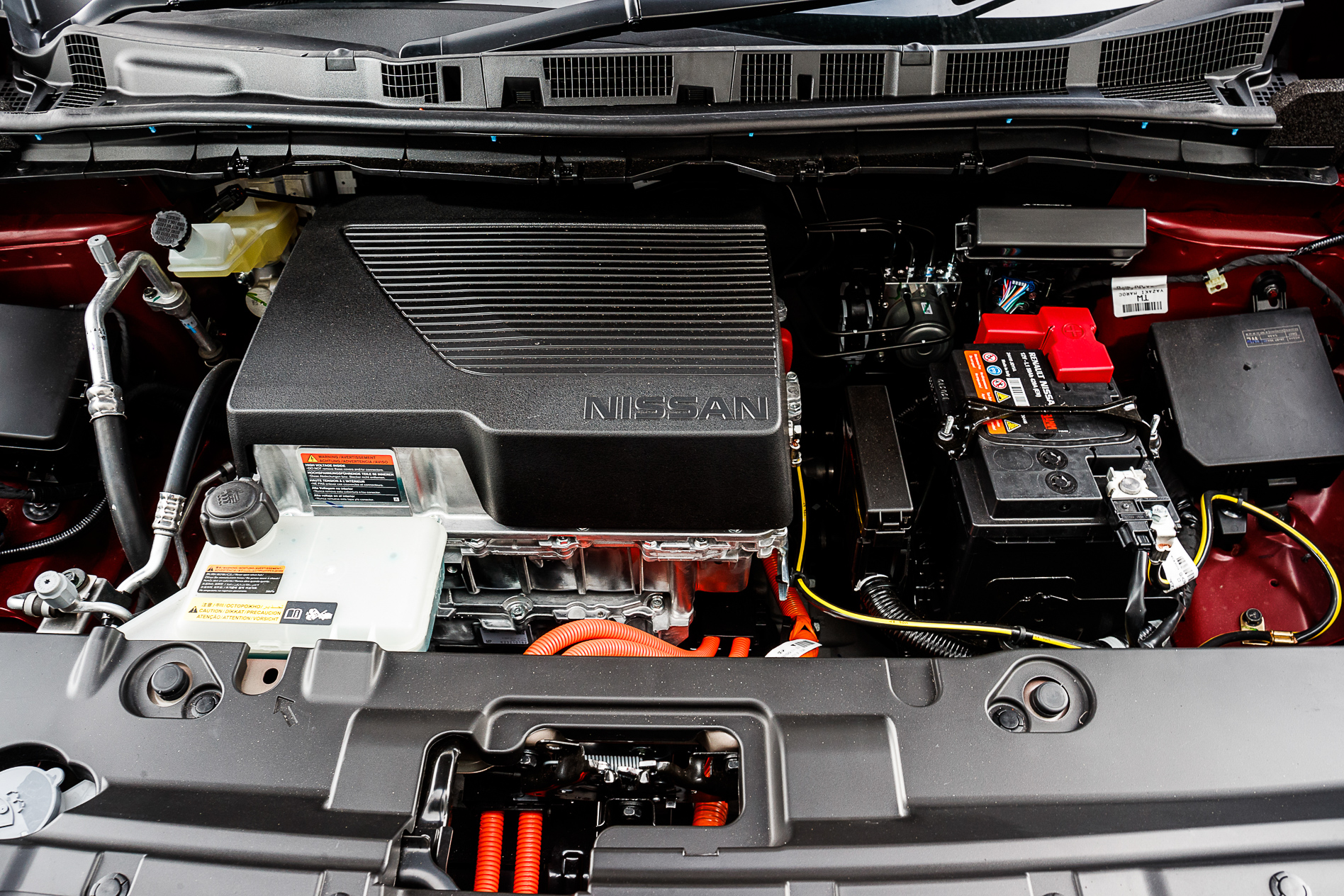
Equipment and value
Australia’s cheapest EV. That’s a slogan you want in your arsenal, and Hyundai has with its $44,990 Ioniq. We’re testing the $48,990 Premium, which still undercuts the Nissan Leaf by a grand. The extra $4K brings heated/ventilated leather seats, wireless phone charging, parking sensors, sunroof, and LED headlights. Like the Leaf, it’s well equipped, and there’s an eight-year battery warranty as well as Hyundai’s five-year unlimited-kilometre warranty.
Score: 15/25
Space and comfort
The Ioniq is the one to pick if you often go four-up. The seats are firmer, but comfort and space is i
mpressive front-to-rear with little EV compromise. Storage is accounted for with myriad stowage compartments, and there’s rake and reach adjustment for the steering. The boot is practical, with a flat load bay when the rear seats are stowed, while boot space is 350 litres. Overall, the Ioniq feels more like an Elantra that happens to be electric, and not a quirky EV.
Score: 20/25
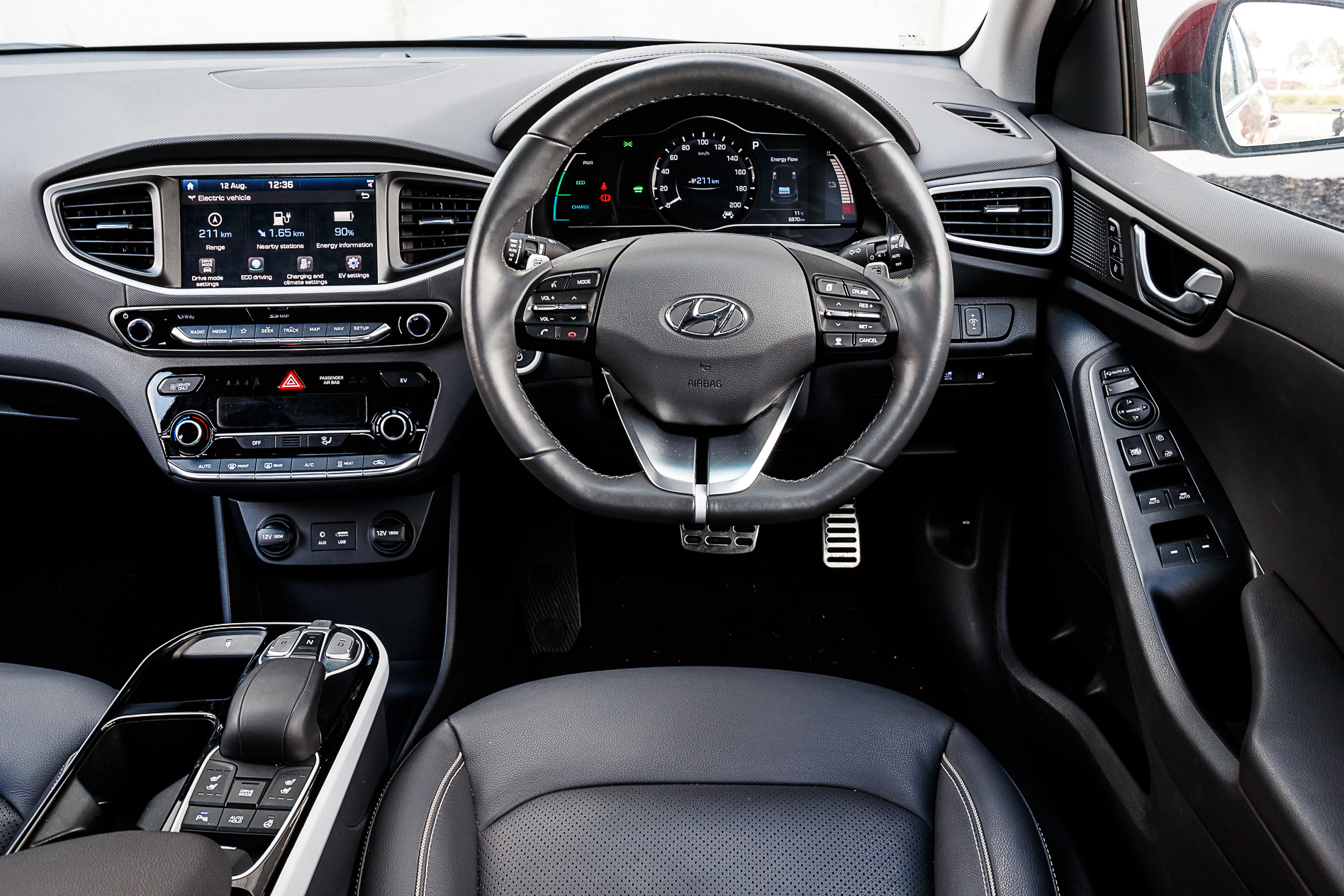
Ride and handling
Comfort and ease of use gain priority over ultimate dynamics. And that’s a good thing. The ride quality is supple in both urban and country environments thanks to chunky-profile tyres and well-tuned suspension. There are four levels of regenerative braking, from none to a lot, but the steering lacks feedback. Sound deadening also could definitely be improved, as roar from the 16-inch Michelin Energy Saver tyres is present at highway speeds.
Score: 18/25
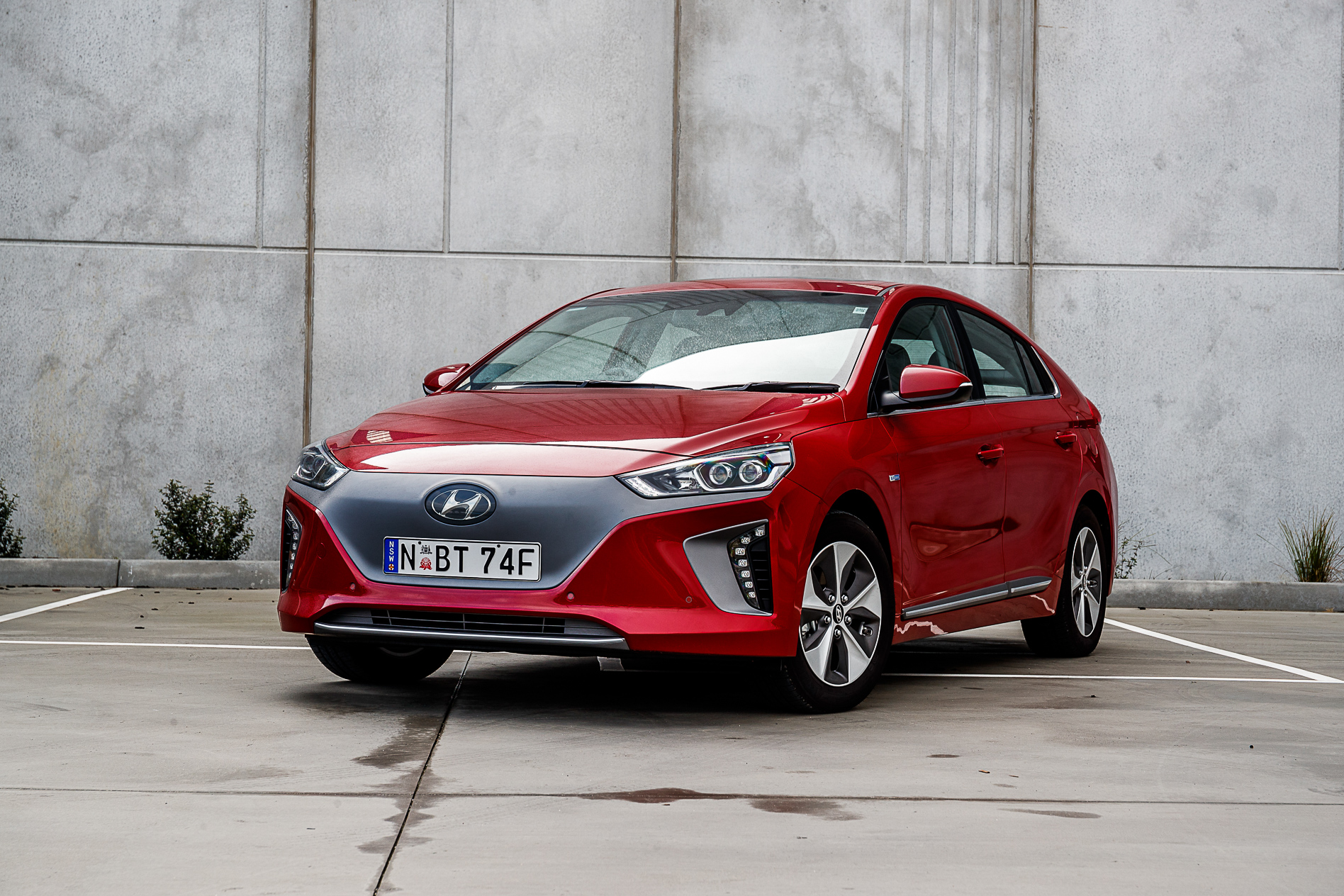
Performance and economy
Mustering 88kW and 295Nm (in Sport), the Ioniq is slower than the Leaf and the 28kWh battery pack is smaller. Hence the range is reduced and comes with a caveat. Yes, 230km is stated, but turn the air-con on and it drops instantly by about 50km. As with the Leaf, highways kill efficiency. A 6.6kWh charger ($1995) returns 100 percent charge in 4.5 hours at your house, while 80 percent charge can be achieved in 23 minutes using a 100kWh DC fast charger.
Score: 14/25
Total score: 67/100
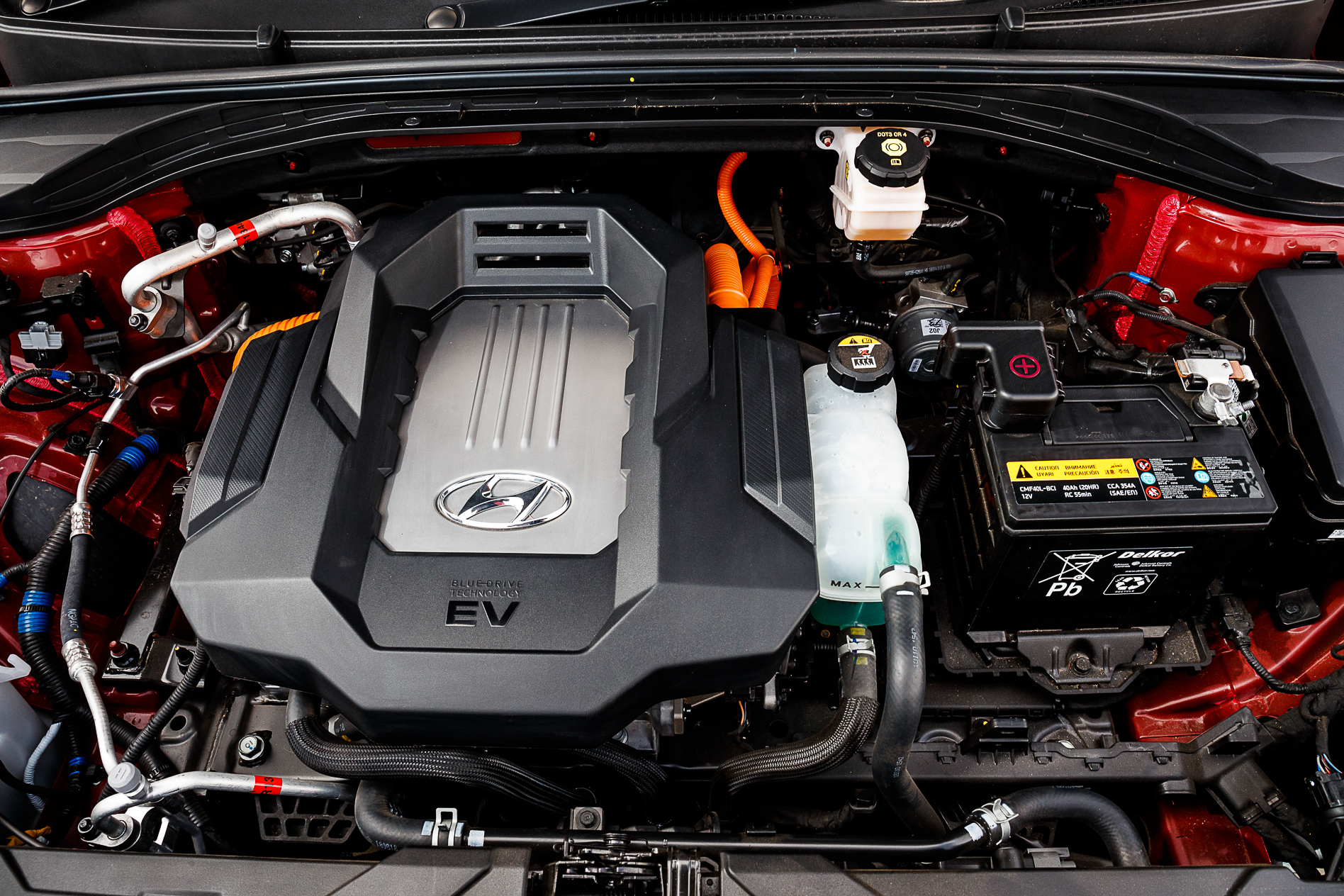
Verdict: Turning over a new Leaf
The Nissan Leaf’s extra range and greater useability win out. Using the Leaf as a, ahem, ‘normal’ car cuts the overall range far less than in the Hyundai. It’s not perfect, and it certainly isn’t cheap (considering you can buy a Tesla Model 3 for $66K), but it makes a better case as an EV over the Ioniq. When vehicle-to-grid technology arrives down under at a feasible price, the Leaf’s ability to contribute to the local grid in times of peak demand, later recharging in an off-peak period, could further reduce running costs while being part of a bigger picture solution for energy demands.
